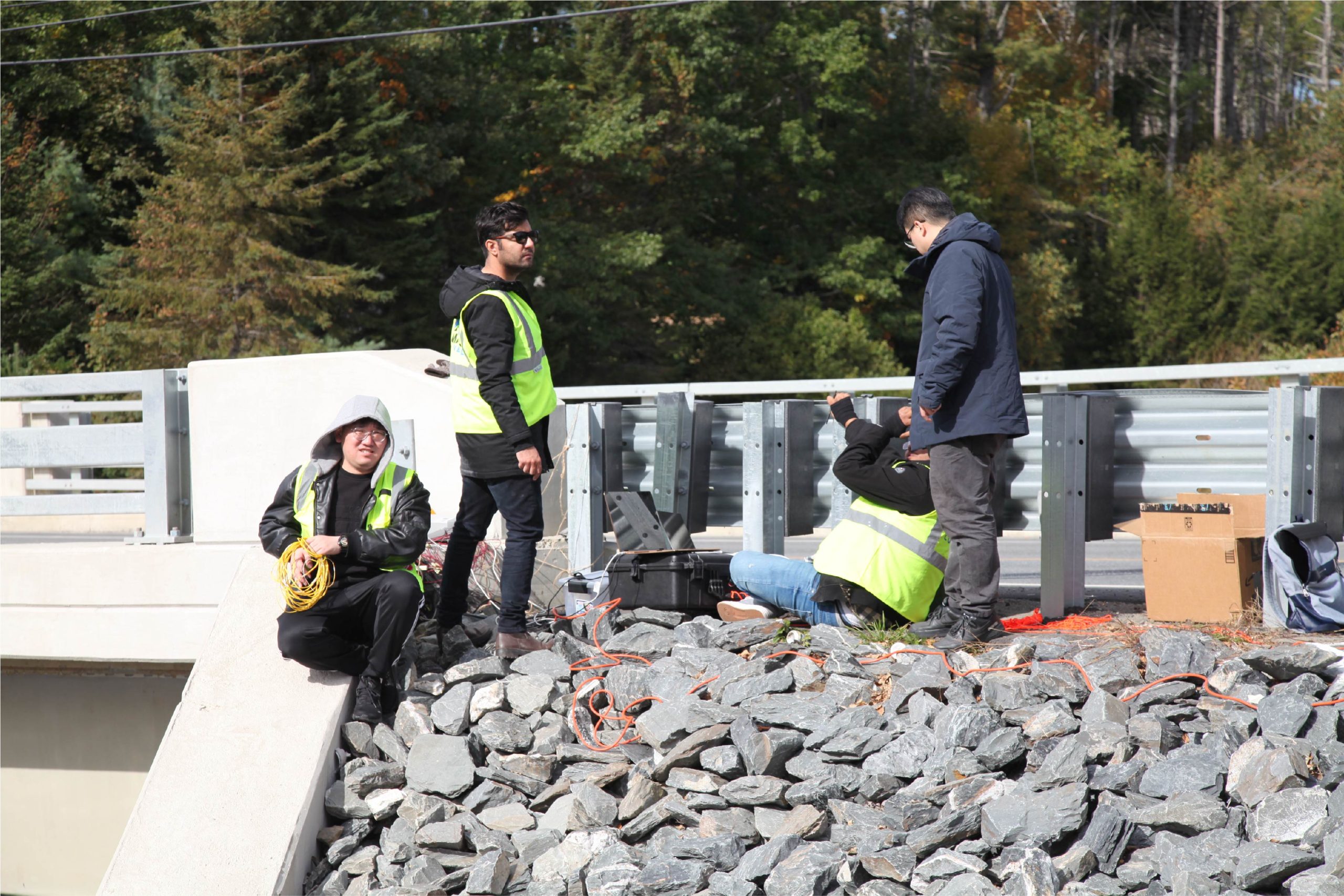
Project 1.05: Distributed Fiber Optic Sensing System for Bridge
Principal Investigator
Dr. Xingwei Wang
Co-PIs
Dr. TzuYang Yu
Institution:
University of Massachusetts Lowell
Project Status
Active
Project Cost
$620,000
Start Date
01/01/2019
Project Type
Base-funded
End Date
12/31/2023
Agency ID
69A3551847101
Sponsors:
Office of the Assistant Secretary for Research and Technology, University Transportation Centers Program, Department of Transportation
UMass Lowell
Implementation of Research Outcomes:
The developed sensing textile was installed on Salmon River Bridge in NH and has been under monitored since winter 2019. The students were trained in signal processing skills. Now the ECE students are working together with Civil Engineering students to understand how to interpret the data in bridge health conditions.
Impacts and Benefits of Implementation:
The long-term monitoring data of the sensing textile on this railway bridge has demonstrated that the novel sensing system is robust for more than two years and can provide stable signals. With improved packaging, the fiber cables can be more robust. It could provide more information to estimate the safety of the bridges. In addition, it increased the body of knowledge or sensing textile. The students were trained in how to conduct field tests and solved unexpected problems on site.
